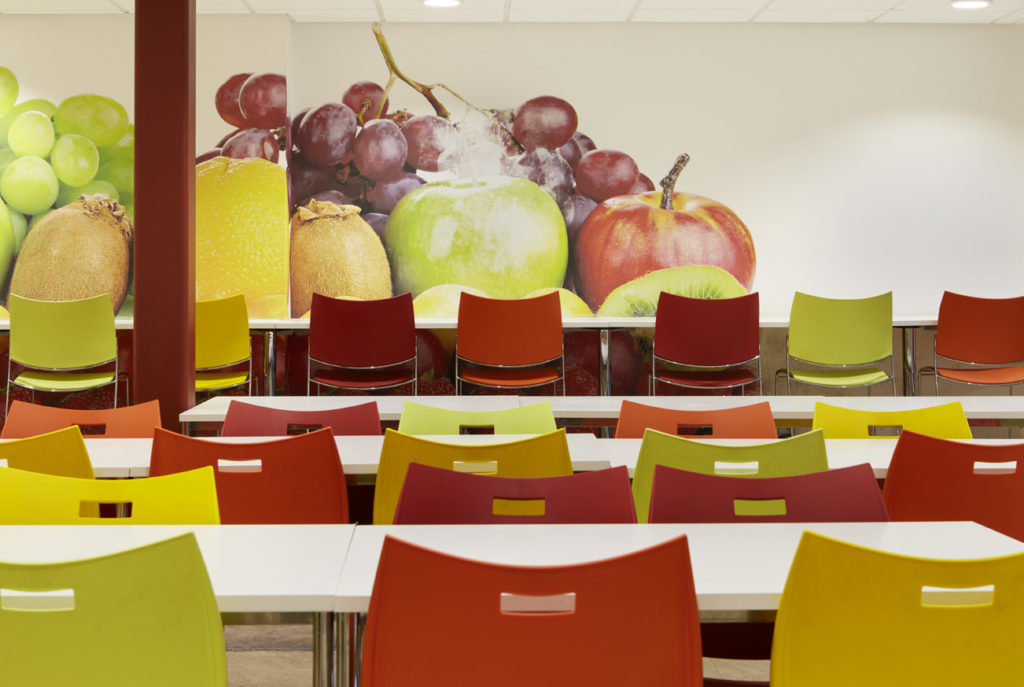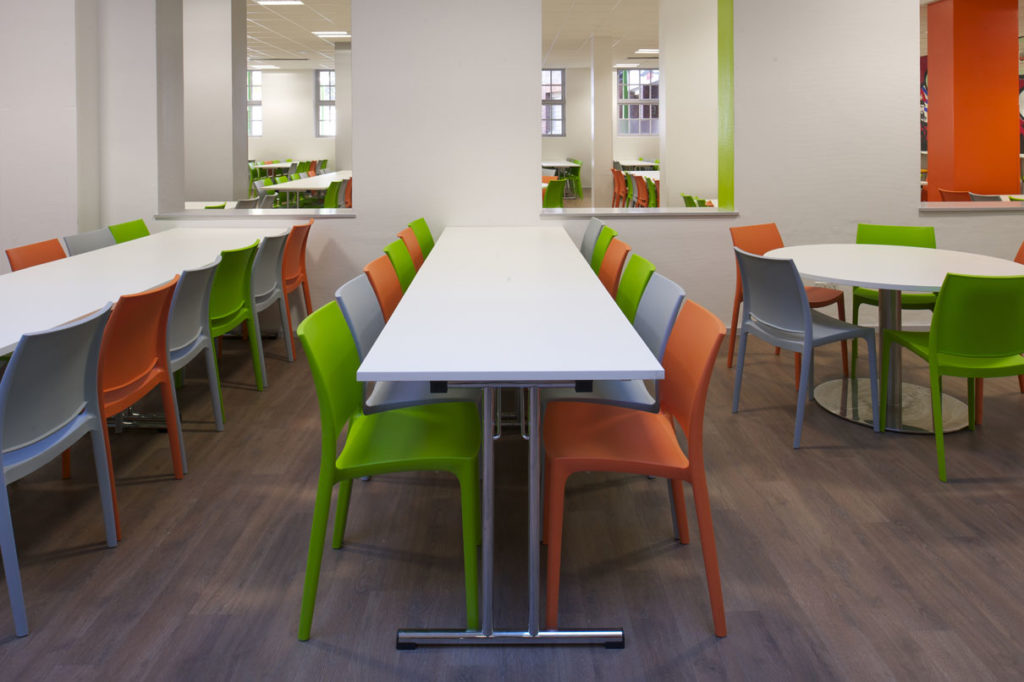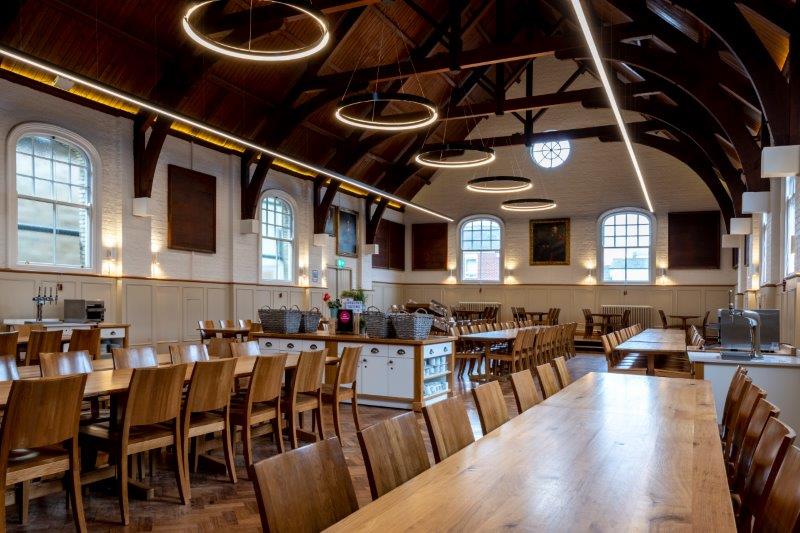Today’s student dining experience is a tall order consisting of healthier food, better dining spaces and increased student numbers.
Over recent years, there has been an ever-increasing development of school catering. Figureheads like Jamie Oliver and Jeanette Orrey have worked tirelessly to improve the overall experience. The most forward-thinking schools are consistently taking steps to improve the dining experience for their students.
The high traffic volumes and rigorous daily use of a dining hall calls for a durable and timeless design. Whilst the aesthetic look and feel of your new dining space is important, it is also crucial to ensure that your space actually works effectively.
By taking the time to carefully plan your dining hall refurbishment, you can ensure that the results of your project will last longer and be more effective than a ‘quick fix’ solution.
Whilst every school is different, the challenges faced within school dining tend to be the same. Feeding hundreds of students in a timeframe generally no longer than an hour is undeniably a feat. Many of the best restaurants would be hard-pushed to achieve the same results.
Common Challenge # 1 – Controlling the flow of people

A lot of schools find the flow of students through their dining spaces a challenge. Herding students through a relatively small space in a short period of time is no easy task. It is important to devise a solution for managing queues, and ensuring that students have easy and straightforward access to what they need; their tray, food and utensils, but secondly, to a suitable seating place. Once they have finished their meal, it is also important to make sure there are easy exit routes to avoid congestion.
It is worth remembering that students use lunchtime to catch up with their friends. They will have been told numerous times by teachers to ‘save the chatter for lunchtime’, so groups of students will want to stick together to talk, both in the lunch queues, and wherever they choose to sit and eat.
Common Challenge # 2 – Managing the mess and dirty dishes

Once your students have finished eating, there will be the inevitable accumulation of used cutlery, plates, trays and any unwanted food.
Managing this without a proper structure can present a large challenge in itself, however with the careful planning and positioning of waste and dish scraping areas, you should be able to make finishing a meal and clearing up the dining hall a much easier task.
Common Challenge #3 – Cutting down on service time and shortening queues

If you are experiencing long queues in your dining space, it is essential to find a solution for serving more people in shorter amounts of time.
There are many different solutions that can be used, from setting up an increased number of service points, to staggering student lunchtimes, or making sure that each student chooses their food ahead of the lunch period.
Common Challenge #4 – Creating a dual-purpose space that can easily be used for other activities

Unless a school is particularly awash with space, it is likely that they will want to use their dining area for other activities. For a lot of primary schools, the dining area doubles up as the school hall, PE space and an area where breakfast and after-school clubs are held.
Within senior schools, the dining hall is likely to be used as a space where functions can be held. Whilst it is a great facility for a school to have, it is also crucial that the furniture chosen within the space can be easily reconfigured without the requirement for excess manual handling, or storage space requirements.
Common Challenge #5 – Creating a pleasant, comfortable and healthy dining environment

The very nature of ‘eating’ as an activity, unfortunately will always cause mess, odours and the need for constant clearing up. Successfully managing these aspects of school dining calls for some vigilance and attention, but once proper systems and equipment have been set in place, it is definitely possible to create and maintain a pleasant dining environment.
Involving the students in this part of the process is a ‘must’ and the more ownership that the students take of their space, the better they will look after it. Instil a sense of responsibility into every pupil to help make lunchtimes a more enjoyable experience for everyone.
Common Challenge #6 – Promoting student wellbeing during lunchtimes

For lunchtime supervisors, keeping an eye over the whole dining area can sometimes be challenging. Choose a mixture of seating, and space dividers, but keep clear sight lines and easy access for the supervisors. Include the students in this process too, and establish a lunchtime code-of-conduct.
For younger students, establish a reward system for good lunchtime behaviour. Lunchtime ‘Buddies’, ‘Clean Plate Rangers’ or ‘Salad Stars’ all help to make lunchtime a more fun and enjoyable experience.



